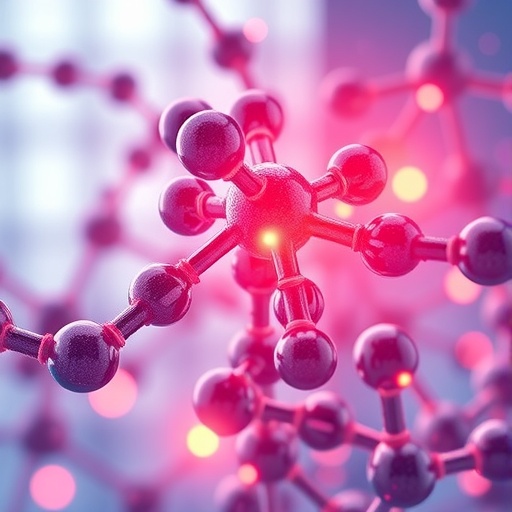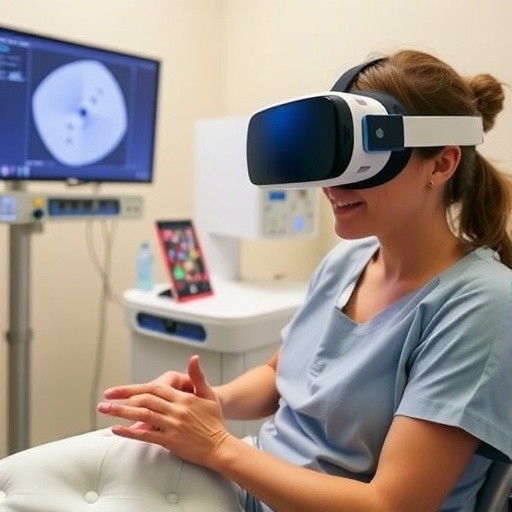In an exciting development in the realm of pharmacokinetics, researchers have introduced an adaptive artificial intelligence framework leveraging advanced technologies such as Graph Attention Networks (GATs), transformers, and AutoML. The study, led by a diverse team of scientists, aims to revolutionize how drug behavior is predicted within the human body, thereby enhancing the efficacy and safety of medications.
Pharmacokinetics has traditionally involved complex modeling and exhaustive data interpretation. However, with the advent of machine learning and AI technologies, the potential to achieve a more precise, nuanced understanding of how drugs distribute, metabolize, and ultimately excrete can be realized. By incorporating GATs, which are particularly adept at handling complex, interdependent data structures like those found in biological systems, the new framework addresses many limitations encountered in standard pharmacokinetic models.
One of the significant breakthroughs reported in this research is the ability of the AI framework to adapt in real time to incoming data. Previous models might have struggled to adjust to unexpected changes, but by utilizing transformers—known for their effectiveness in processing sequential data—the framework can dynamically update predictions based on new pharmacological insights. The capability to manage these adjustments allows for a more robust model that can keep pace with the rapidly evolving landscape of drug discovery and development.
AutoML plays a critical role in streamlining the machine-learning process. It automates the selection and optimization of models, which reduces the manual effort involved in developing AI applications. This automation is pivotal because it enables researchers to focus on data interpretation and clinical relevance, rather than getting bogged down with technical intricacies. The synergy of these technologies results in a system that not only improves prediction accuracy but also enhances operational efficiency in pharmacokinetics research.
An important aspect of this adaptive AI framework is its ability to integrate biochemical data from multiple sources. This is crucial since drug behavior is influenced by a plethora of factors, including genetic variability, organ function, co-medications, and environmental influences. By aggregating data from diverse types, the AI system can identify patterns and correlations that would otherwise remain concealed in isolated datasets. This comprehensive view is vital for crafting personalized medicine approaches that meet the unique needs of individual patients.
Moreover, the implications of this research extend beyond mere academic curiosity; they herald a new phase in precision medicine. Traditional pharmacotherapy often results in varied patient responses due to genetic and physiological differences. With this innovative AI framework, healthcare professionals could gain deeper insights into how different populations respond to medications, leading to the development of tailored treatment regimens that maximize efficacy while minimizing adverse effects.
The authors of the study not only emphasize the framework’s capabilities but also share the significance of transparency in AI applications in healthcare. As these systems become integral in clinical settings, it is crucial that their decision-making processes, rooted in AI algorithms, are understandable to clinicians. The researchers advocate for developing explainable AI methodologies that make it easier for healthcare professionals to trust and utilize these advanced tools in their practice.
As the field of pharmacokinetics progresses into this new age of artificial intelligence, there are still challenges that need to be addressed. Data privacy and security are paramount, especially when handling sensitive patient information. Current regulations and ethical standards will need to evolve to safeguard individual privacy while allowing for the public good that comes from research advancements.
In conclusion, the introduction of an adaptive AI framework for pharmacokinetics signifies a substantial leap forward in drug development and patient care. By harnessing the capabilities of GATs, transformers, and AutoML, researchers can create models that are both accurate and adaptable. These technological advancements not only improve our understanding of drug behavior but also set the stage for a future where personalized medicine becomes a reality.
This research shines a spotlight on the power of collaboration in science. The convergence of expertise from various fields—computer science, pharmacology, and bioinformatics—is critical to overcoming the complexity inherent in understanding pharmacokinetics. By fostering interdisciplinary partnerships, the scientific community can solve problems that are increasingly intricate and multi-faceted.
As the publication of these findings approaches, the scientific community watches with anticipation. The implications of this research extend far beyond academia. Pharmaceutical companies, healthcare providers, and ultimately patients are set to benefit from the advancements brought forth by this innovative approach to pharmacokinetics. With every step forward, researchers get closer to realizing a world where medications are not only effective but are also designed with the unique characteristics of individuals in mind, enhancing overall health outcomes.
Strong endorsements from industry leaders are already emerging, emphasizing the transformative potential of this adaptive AI framework. As organizations evaluate its applicability within their systems, the hope is that this research will inspire broader acceptance of AI-driven methods in traditional pharmacological studies. The fusion of advanced technology and drug delivery systems stands poised to reshape the landscape of healthcare, paving the way for more effective and individualized therapies for patients everywhere.
As we arm ourselves with these cutting-edge tools, it is crucial to maintain a focus on ethical implications and responsible use. This framework is not merely a technical achievement; it represents a promise of improved health outcomes and a more nuanced understanding of disease and medication interactions. The collaborative efforts of researchers, practitioners, and regulators will be essential in seeing this vision become a reality.
Thus, as researchers continue to publish their findings and refine their approaches, the excitement surrounding this innovative framework is palpable. The future of pharmacokinetics has never looked brighter, and with continued vigilance and collaboration, it’s a future that promises not only scientific advancement but also tangible benefits for patients worldwide.
Subject of Research: Adaptive AI framework for pharmacokinetics.
Article Title: Adaptive AI framework for pharmacokinetics using GATs, transformers, and AutoML.
Article References:
Satheeskumar, R., Devabalan, P., Satyanarayana, C.H.V. et al. Adaptive AI framework for pharmacokinetics using GATs, transformers, and AutoML.
Mol Divers (2025). https://doi.org/10.1007/s11030-025-11390-5
Image Credits: AI Generated
DOI: 10.1007/s11030-025-11390-5
Keywords: Adaptive AI, pharmacokinetics, Graph Attention Networks, AutoML, precision medicine, drug distribution, machine learning, personalized medicine, healthcare innovation.
Tags: adaptive AI in pharmacokineticsadvanced AI technologies in medicineAutoML applications in pharmacokineticscomplex data structures in biologydynamic modeling of drug metabolismenhancing medication safety with AIGraph Attention Networks in drug modelingimproving pharmacokinetic models with AIinnovations in drug behavior predictionmachine learning in drug efficacyreal-time data adaptation in pharmacokineticstransformers for pharmacological predictions





